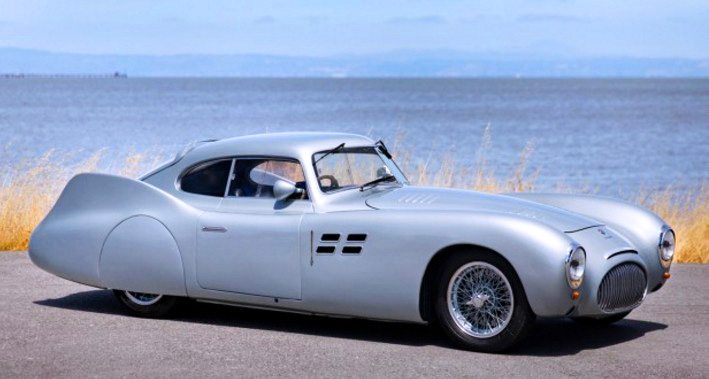The History of the Italian Automobile
Part 88: Carrozzeria Vignale
By David Cavaliere
The history of Carrozzeria Vignale is an interesting one, spanning the formative years of the Italian coachbuilders art and ending all too soon with his tragic auto accident death literally days after selling his company. The story has a cast of characters that are now legendary, but remember – all legends have a beginning and in the history of the Italian automobile, more often than not, those origins were rather humble.
Alfredo Vignale was born in Turin on June 15, 1913, the fourth of seven children. He left school at the age of 11 to work. His family was already deeply involved in the rapidly expanding automotive business; two of his brothers worked as car painters and Alfredo’s father was the paint shop foreman at Stabilimenti Farina. Young Alfredo was sent to a sheet metal shop as a helper/apprentice. He proved to be a natural ‘panel beater’ and in 1929 joined his father at Farina.
By 1939, the Vignale brothers decided to venture out on their own and established a small workshop in Turin’s Gruliasco district. The young men were ambitious, but the Second World War placed a halt on their business for several years. After the war, owners, mechanics and coachbuilders took their cars out of hiding places and began to modernize the pre-war designs.
Alfredo and his brothers, Giuseppe and Guglielmo, partnered with fellow craftsman Angelo Balma and set up shop in Turin. Alfredo was able to attract several craftsmen from the workshops of the well-established Pininfarina (see Part 83 – Carrozzeria Pininfarina, January 11, 2018). The timing was right for the carrozzarias to get Italy on four wheels. The brothers soon acquired a beaten up Fiat Topolino and fitted a new body of their own design.
In 1948, the firm captured significant attention with a prize-winning body design for a Fiat 1500. It was actually attributed to Balma and written up with great praise by the British magazine ‘Autocar.’ The magazine made a correction in a subsequent issue crediting Carrozzeria Vignale and from that moment onward their business took off. It received orders initially from the racing world (Alfredo designed the front of the 1949 BRM V16 race car), but soon orders came in from Ferrari. The design house bodied three of the winning Mille Miglia Ferraris, as well as a victory in the Carrera Panamericana. Vignale did not produce many Ferraris in total and today they are highly sought after. But although the Ferrari period was rather short (Part 35 – Ferrari – The Road Cars of the 1950s and 60s, September 29, 2016), Vignale’s name was established for good.
Vignale collaborated with an impressive variety of manufacturers and private clients in the decade of the 1950s. It produced a one-off Aston Martin early on, followed by a Rolls-Royce and there was the storied Cunningham C-3 coupe of 1952. Other bodies were built for Maserati (Part 69 – Maserati Gran Turismos, August 1, 2017), Siata and Cisitalia (Part 19 – Cisitalia – What if? June 2, 2016). In 1951, Abarth commissioned Vignale to complete a luxurious coupe body for the 204. He also designed and installed a fully appointed interior (Part 1 – the Manufacturers A – Z, January 14, 2016).
Throughout this entire period, Alfredo was Vignale’s design director, with a group of staff stylists that included a young Giovanni Michelotti (Part 74 – The Designs of Michelotti, September 21, 2017). As the 1960s began, Vignale began to concentrate on larger projects and in 1961, the carrozzeria moved to their new premises in Grugliasco, just outside Torino, where far greater production could be accomplished. In this factory, Vignale produced the last Lancia Appias and undertook production of the Flavia (Part 63 – Lancia 1960 – 1994, June 29, 2017), the Maserati 3500 GTV, the Sebring and Fiats that were later produced under Vignale’s own name. However, the economies of scale were not to be; the relatively small scale, labor intensive production made the cars too expensive to attract the large production that Vignale needed to survive. The Grugliasco plant proved to be a white elephant and in November 1969, Alfredo sold the firm to De Tomaso which used the factory for the production of the Pantera (Part 24 – De Tomaso Modena SpA, July 7, 2016). Carrozzeria Vignale at that point ceased to exist. Three days later, Alfredo was killed in an auto accident near his old plant, bringing to an end the final chapter of the company.
Next week we reach Part 89 and the letter Z of this series and that means Zagato. Please send comments to [email protected].




